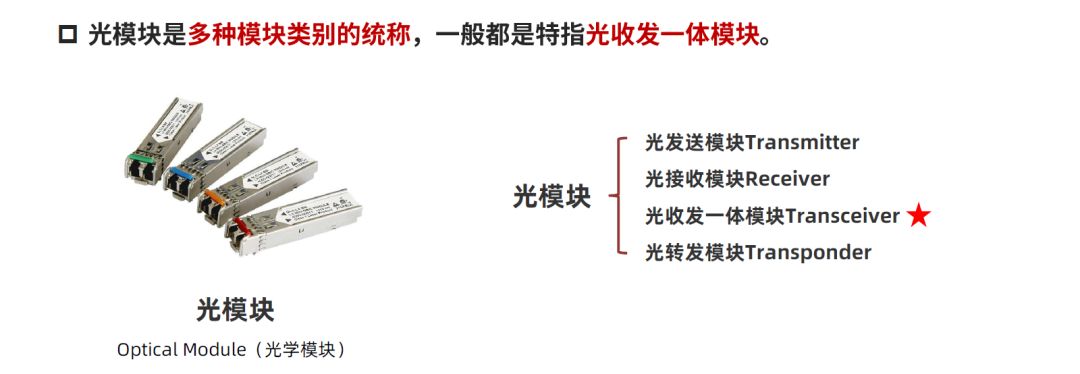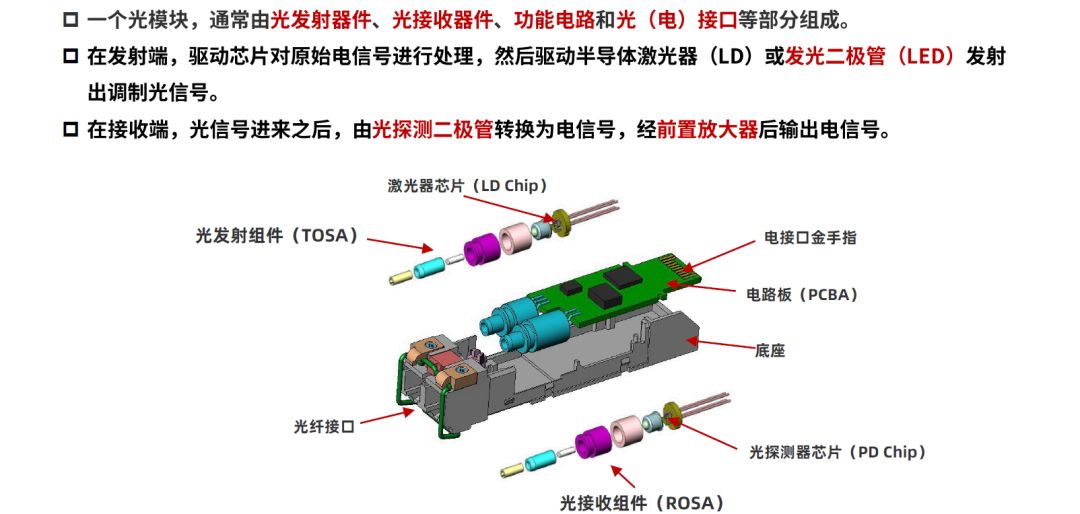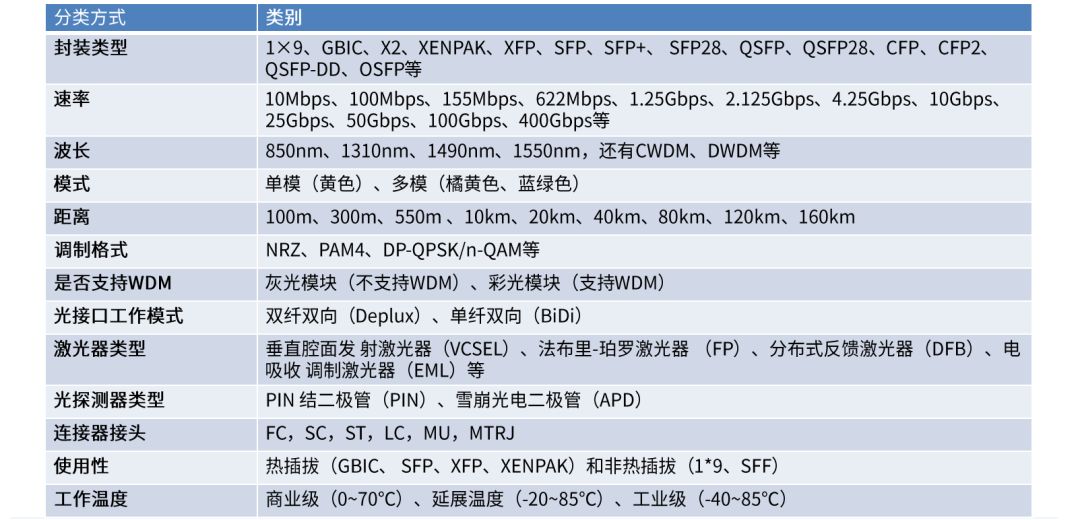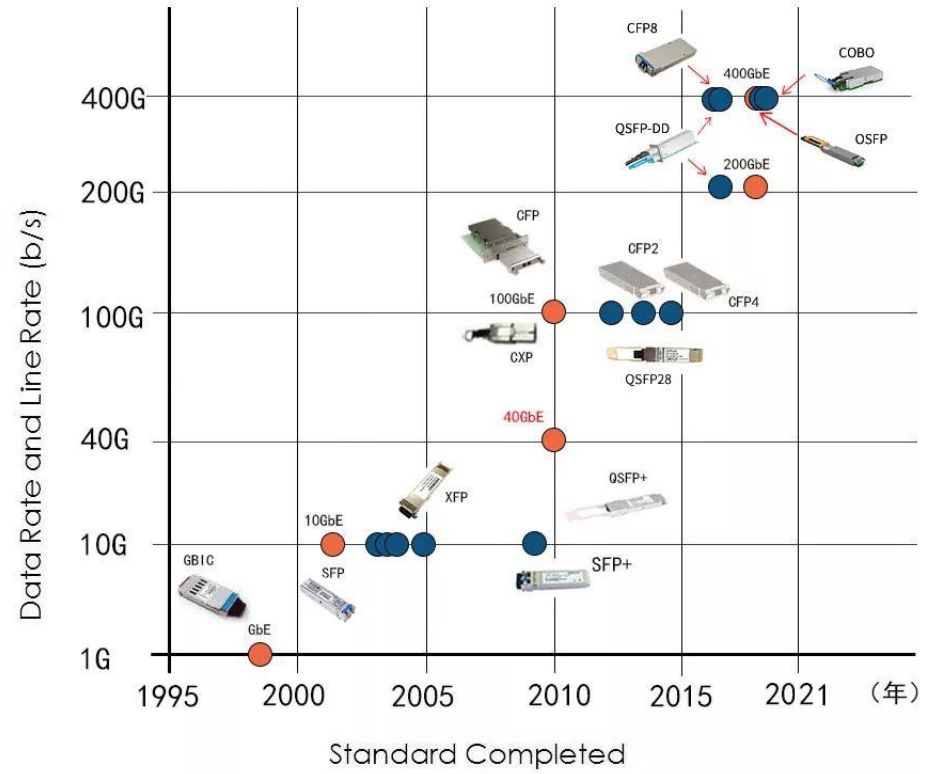Basic introduction of optical module
The optical module is composed of optoelectronic devices, functional circuits and optical interfaces. The optoelectronic devices include two parts: transmitting and receiving. In short, the function of the optical module is to convert the electrical signal into the optical signal at the sending end. After the optical signal is transmitted through the optical fiber, the receiving end converts the optical signal into the electrical signal.
The transmission part is: the input electrical signal of a certain bit rate is processed by the internal drive chip, and then drives the semiconductor laser (LD) or light emitting diode (LED) to emit the modulated optical signal of corresponding rate. The internal optical power automatic control circuit is equipped to keep the output optical signal power stable.
The receiving part is: the optical signal input module with a certain bit rate is converted into electrical signal by the optical detection diode, and the electrical signal with the corresponding bit rate is output after the preamplifier.
-Basic concept of optical module-
Port-optical module is the general name of various module categories, generally referring to optical transceiver integrated module
-Function of optical module-
Its function is simply to realize the conversion between optical signals and electrical signals.
-Optical module structure-
An optical module is usually composed of optical transmitter, optical receiver, functional circuit and optical (electrical) interface.
At the transmitter, the driver chip processes the original electrical signal, and then drives the semiconductor laser (LD) or light emitting diode (LED) to emit modulated optical signal.
The port is at the receiving end. After the optical signal comes in, it is converted into electrical signal by the optical detection diode, and then output electrical signal through the preamplifier.
-Optical mode classification-
-Development history of optical mode-
-Introduction to optical module packaging-
There are a wide range of packaging standards for optical modules, mainly because:
》The development speed of optical fiber communication technology is too fast. The speed of the optical module is increasing, and the volume is also shrinking, so that every few years, new packaging labels will be issued
accurate It is also difficult to be compatible between new and old packaging standards.
》The application scenarios of optical modules are diverse. Different transmission distances, bandwidth requirements, and places of use, corresponding to different types of optical fiber used, optical modules are also different.
Port GBIC
GBIC is Giga Bitrate Interface Converter.
Before 2000, GBIC was the most popular optical module packaging and the most widely used gigabit module form.
Port SFP
Because of the large size of GBIC, SFP appeared later and began to replace GBIC.
SFP, the full name of Small Form-factor Pluggable, is a small hot-swappable optical module. Its small size is relative to GBIC packaging. The size of SFP is half smaller than that of GBIC module, and more than twice the number of ports can be configured on the same panel. In terms of function, there is little difference between the two, and both support hot plugging. The maximum bandwidth supported by SFP is 4Gbps
Oral XFP
XFP is a 10-Gigabit Small Form-factor Pluggable, which can be understood at a glance. It is a 10-Gigabit SFP.
XFP adopts a full-speed single-channel serial module connected by XFI (10Gb serial interface), which can replace Xenpak and its derivatives.
Port SFP+
SFP+, like XFP, is a 10G optical module.
The size of SFP+is the same as that of SFP. It is more compact than XFP (reduced by about 30%), and its power consumption is also smaller (reduced by some signal control functions).
O SFP28
The SFP with a rate of 25Gbps is mainly because the 40G and 100G optical modules were too expensive at that time, so this compromise transition scheme was made.
QSFP/QSFP+/QSFP28/QSFP28-DD
Quad Small Form-factor Pluggable, four-channel SFP interface. Many mature key technologies in XFP have been applied to this design. QSFP can be divided into 4 according to speed × 10G QSFP+、4 × 25G QSFP28、8 × 25G QSFP28-DD optical module, etc.
Take QSFP28 as an example, which is applicable to 4 × 25GE access port. QSFP28 can be used to upgrade from 25G to 100G without 40G, greatly simplifying the difficulty of cabling and reducing costs.
QSFP/QSFP+/QSFP28/QSFP28-DD
QSFP-DD, established in March 2016, refers to “Double Density”. Add a row of channels to the 4 channels of the QSFP and change them into 8 channels.
It can be compatible with the QSFP scheme. The original QSFP28 module can still be used, just insert another module. The number of gold fingers of OSFP-DD is twice that of QSFP28.
Each QSFP-DD adopts 25Gbps NRZ or 50Gbps PAM4 signal format. With PAM4, it can support up to 400Gbps.
OSFP
OSFP, Octal Small Form Factor Pluggable, “O” stands for “octal”, officially launched in November 2016.
It is designed to use 8 electrical channels to realize 400GbE (8 * 56GbE, but 56GbE signal is formed by 25G DML laser under the modulation of PAM4), and its size is slightly larger than QSFP-DD. The optical engine and transceiver with higher wattage have slightly better heat dissipation performance.
CFP/CFP2/CFP4/CFP8
Centum gigabits Form Pluggable, dense wavelength division optical communication module. The transmission rate can reach 100-400Gbpso
CFP is designed on the basis of SFP interface, with larger size and supporting 100Gbps data transmission. CFP can support a single 100G signal and one or more 40G signals.
The difference between CFP, CFP2 and CFP4 is volume. The volume of CFP2 is one half of that of CFP, and CFP4 is one quarter of that of CFP. CFP8 is a packaging form specially proposed for 400G, and its size is equivalent to CFP2. Support 25Gbps and 50Gbps channel rates, and realize 400Gbps module rate through 16x25G or 8×50 electrical interface.
Post time: Feb-14-2023
















